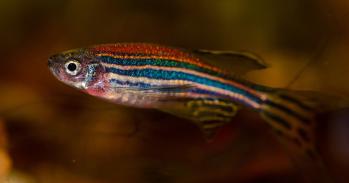The ten organisations in Great Britain that carry out the highest number of animal procedures - those used in medical, veterinary and scientific research – have released their annual statistics today.
The ten organisations in Great Britain that carry out the highest number of animal procedures - those used in medical, veterinary and scientific research – have released their annual statistics today.
The statistics for the University of Cambridge are available on the website as part of our ongoing commitment to transparency and openness around the use of animals in research.
This coincides with the publication of the Home Office’s report on the statistics of scientific procedures on living animals in Great Britain in 2022.
The ten organisations carried out 1,434,403 procedures, 52% or just over half of the 2,761,204 procedures carried out on animals for scientific research in Great Britain in 2022. Of these 1,434,403 procedures, more than 99% were carried out on mice, fish and rats and 82% were classified as causing a similar level of pain, or less, as an injection.
The ten organisations are listed below alongside the total number of procedures they carried out in 2022. This is the eighth consecutive year that organisations have come together to publicise their collective statistics and examples of their research.
| Organisation | Number of Procedures (2022) |
|---|---|
| University of Oxford | 209,544 |
| University of Cambridge |
206,992 |
| Francis Crick Institute | 190,981 |
| University of Edinburgh | 154,764 |
| UCL | 148,050 |
| Medical Research Council | 136,732 |
| King's College London | 123,228 |
| University of Glasgow | 108,204 |
| University of Manchester | 95,004 |
| Imperial College London | 60,904 |
| TOTAL | 1,434,403 |
In total, 64 organisations have published their 2022 animal research statistics.
All organisations are committed to the ‘3Rs’ of replacement, reduction and refinement. This means avoiding or replacing the use of animals where possible; minimising the number of animals used per experiment and optimising the experience of the animals to improve animal welfare. However, as institutions expand and conduct more research, the total number of animals used can rise even if fewer animals are used per study.
All organisations are signatories to the Concordat on Openness on Animal Research in the UK, a commitment to be more open about the use of animals in scientific, medical and veterinary research in the UK. More than 125 organisations have signed the Concordat including UK universities, medical research charities, research funders, learned societies and commercial research organisations.
Wendy Jarrett, Chief Executive of Understanding Animal Research, which developed the Concordat on Openness, said:
“Animal research remains a small but vital part of the quest for new medicines, vaccines and treatments for humans and animals. Alternative methods are gradually being phased in, but, until we have sufficient reliable alternatives available, it is important that organisations that use animals in research maintain the public’s trust in them. By providing this level of information about the numbers of animals used, and the experience of those animals, as well as details of the medical breakthroughs that derive from this research, these Concordat signatories are helping the public to make up their own minds about how they feel about the use of animals in scientific research in Great Britain.”
Professor Anne C Ferguson-Smith, Pro-Vice-Chancellor (Research & International Partnerships) and Arthur Balfour Professor of Genetics, said:
“In Cambridge we have careful monitoring of our animal usage, applying reduction, replacement and refinement of animal work to ensure that they are used when there is no alternative. For example, animals are used in research tackling neurodegenerative diseases like Parkinson’s and Multiple Sclerosis, and in repairing damaged nerves to restore movement to paralysed limbs.
We want to make major improvements to people’s lives, and we have a moral responsibility to ensure new treatments or procedures are safe, by assessing them first on animals, before developing approaches to apply them to humans.”
Adapted from a press release by Understanding Animal Research.
CASE STUDY: The Ugly Naked Guys who age healthily, don’t feel pain, and rarely get cancer
“Naked mole-rats have many weird features, and we’re trying to work out the underpinning genetic or physiological basis for these. That knowledge could be used to help companion animals or humans with problems such as inflammatory pain, arthritis and cancer," says Professor Ewan St. John Smith, University of Cambridge Department of Pharmacology.
A team at Cambridge has revealed that naked mole-rats have a genetic variation that makes acid act as an anaesthetic to their nerves. Understanding this better could help develop new pain-relieving drugs for human inflammatory conditions like arthritis.
The animals have exceptional cancer resistance compared to humans. The team found that mutations in naked mole-rat DNA occur at a slower rate than in mouse DNA, and suggest that naked mole-rats have an ultra-good immune system that spots and kills cancer cells.
Naked mole-rats live over 30 years and age healthily. The team is also investigating how the animal’s brain changes with age, offering potential clues for healthy aging and age-related illnesses like dementia.

The text in this work is licensed under a Creative Commons Attribution-NonCommercial-ShareAlike 4.0 International License. Images, including our videos, are Copyright ©University of Cambridge and licensors/contributors as identified. All rights reserved. We make our image and video content available in a number of ways – as here, on our main website under its Terms and conditions, and on a range of channels including social media that permit your use and sharing of our content under their respective Terms.




